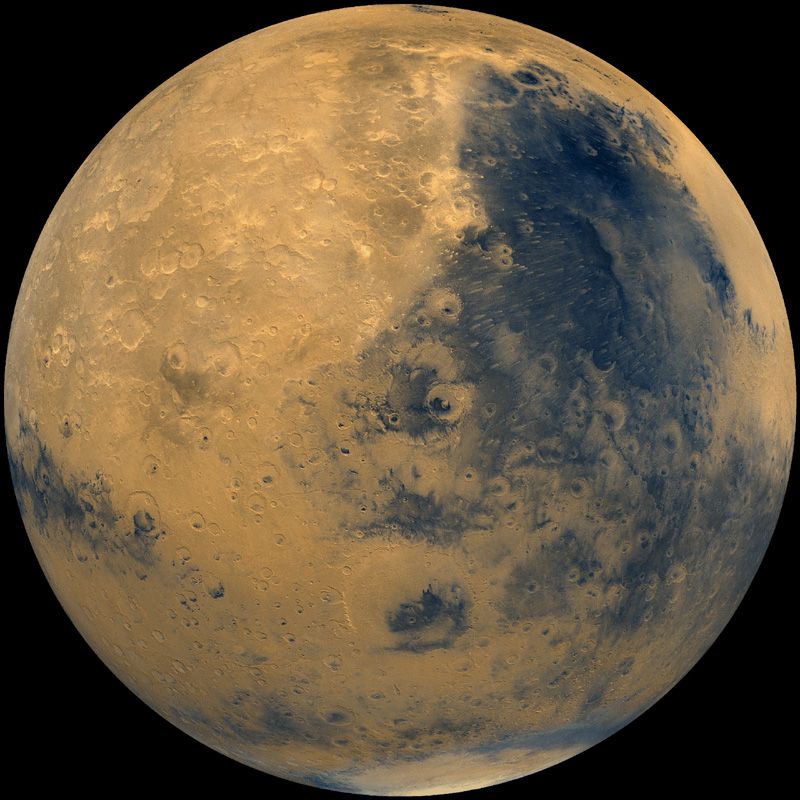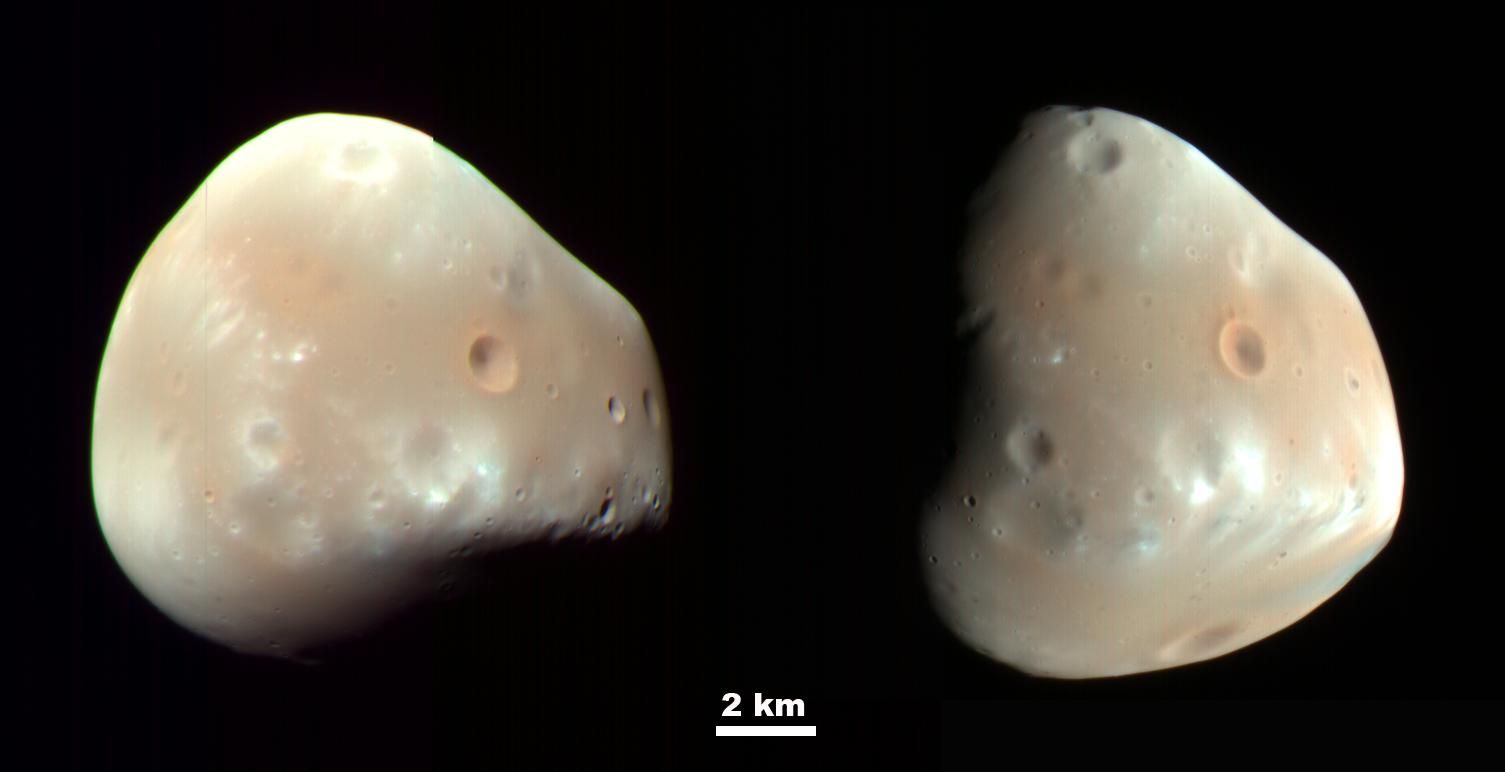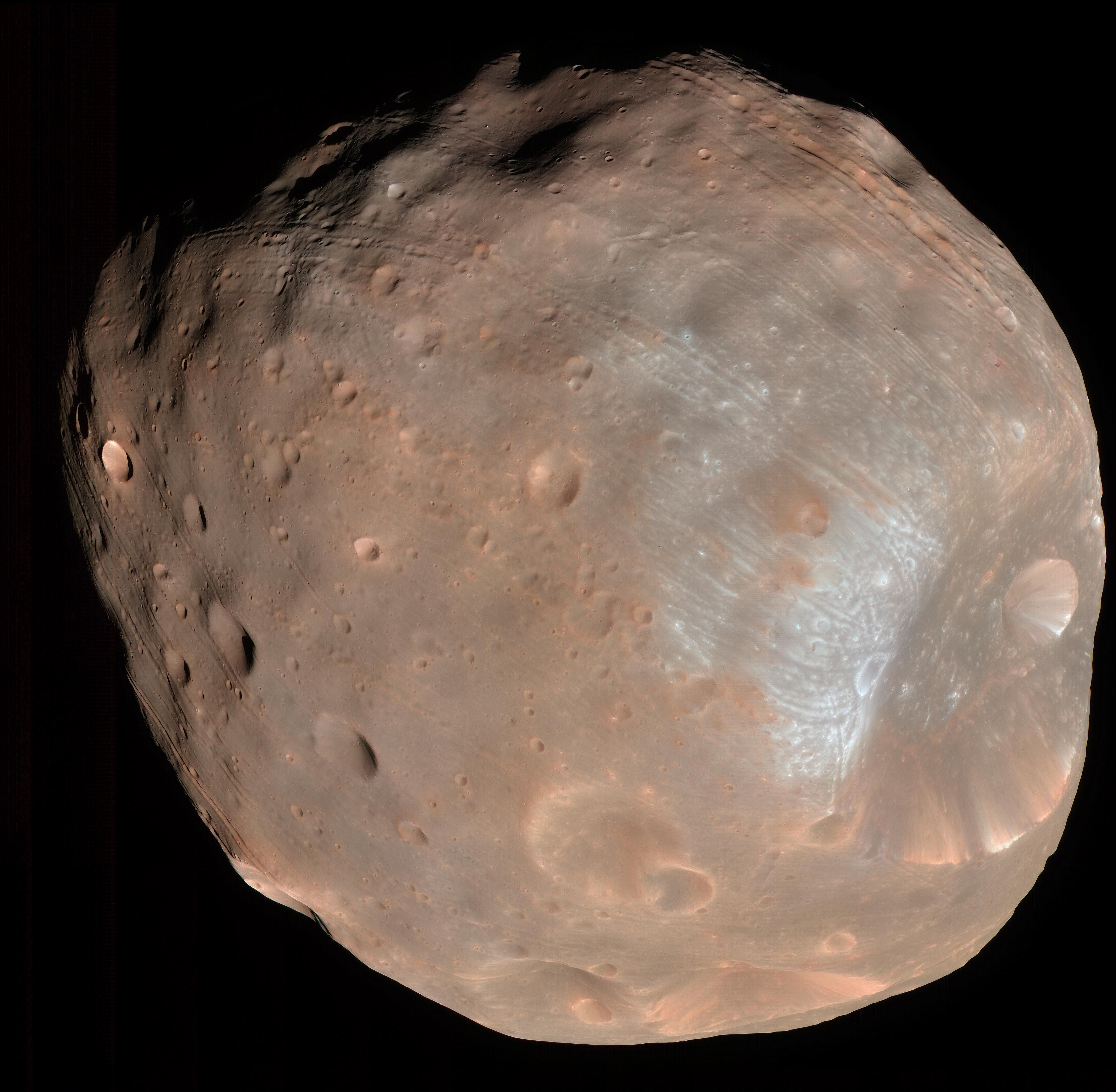Mars
Mars
The most Earthlike surface environment of any other planet, with a thin
atmosphere and evidence of liquid water in the past, leading to speculation that
life may have once existed there.

Credit: (Viking Orbiters 1 and 2, MG01S306-347SP)
The small rocky planet is no longer active,
but in the past geologic processes formed the largest volcano (Olympus Mons) and
the longest valley (Valles Marineris) in the solar system. Other earthlike
phenomena include dust storms, seasonal polar caps, dune fields, clouds, dust
devils, and a day roughly 24 hours long.

NASA's Mars Exploration Rover Opportunity is spending the seventh anniversary of its landing on Mars investigating a crater called "Santa Maria," which has a diameter about the length of a football field.
Credit:(NASA/JPL-Caltech/Cornell/ASU)
Moons

These color-enhanced views of Deimos, the smaller of the two moons of Mars, result from imaging on Feb. 21, 2009, by the High Resolution Imaging Science Experiment (HiRISE) camera on NASA's Mars Reconnaissance Orbiter.
Credit:(NASA/JPL-Caltech/University of Arizona)

The High Resolution Imaging Science Experiment (HiRISE) camera on NASA's Mars Reconnaissance Orbiter took two images of the larger of Mars' two moons, Phobos, within 10 minutes of each other on March 23, 2008. This is the first, taken from a distance of about 6,800 kilometers (about 4,200 miles). It is presented in color by combining data from the camera's blue-green, red, and near-infrared channels.
Credit:(NASA/JPL-Caltech/University of Arizona)
Fun Facts
- More missions have gone to Mars than to any other planet
- Mars has two small moons, Phobos and Deimos
- Temperatures at the surface typically vary from about -100 °C (-150 °F)
to -20 °C (-5 °F)
Missions
Mariner 4: Flyby (1965)
Mariner 6: Flyby (1969)
Mariner 7: Flyby (1969)
Mars 2: Orbiter (1971-1972)
Mars 3: Orbiter and Lander (1971-1972)
Mariner 9: Orbiter (1971-1972)
Mars 4: Flyby (1974)
Mars 5: Orbiter (1974)
Mars 6: Lander (1974)
Mars 7: Flyby (1974)
Viking 1: Orbiter and Lander (1976-1980)
Viking 2: Orbiter and Lander (1976-1978)
Phobos 2: Orbiter (1989)
Mars Global Surveyor: Orbiter (1997-2006)
Mars Pathfinder: Lander and Rover (1997)
Mars Odyssey: Orbiter (2001- )
Mars Express: Orbiter (2003- )
Spirit: Rover (2004-2010)
Opportunity: Rover (2004- )
Mars Reconnaissance Orbiter: Orbiter (2006- )
Phoenix: Lander (2008)
Mars Science Laboratory (Launch 2011)
